Explainer: What Is Zionism?
From biblical times to the present, Jews and Judaism have had an unbroken connection to Zion, a reference to Eretz Yisrael, the Land of Israel, derived from the hill at the heart of Jerusalem. Zionism…

From biblical times to the present, Jews and Judaism have had an unbroken connection to Zion, a reference to Eretz Yisrael, the Land of Israel, derived from the hill at the heart of Jerusalem. Zionism…
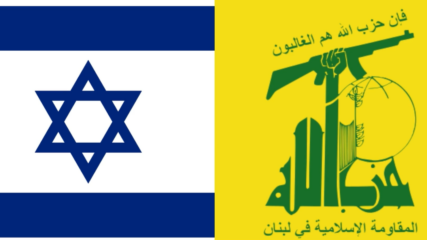
Hezbollah has used its stronghold in southern Lebanon to launch continual attacks on northern Israel since October 8, 2023. Hezbollah says it is motivated by its support for Hamas, a fellow member of Iran’s Axis of Resistance surrounding Israel. While Hezbollah is Shia and Hamas is Sunni, both are devoted to Israel’s destruction, and both receive funding from and coordinate with Iran.

On October 8, 2023, Hezbollah launched a barrage of rockets at northern Israel that escalated tensions in the region and prompted a substantial increase in the IDF presence along the border with Lebanon. It was not the first instance of such hostilities, however, as both sides have a long history of conflict.
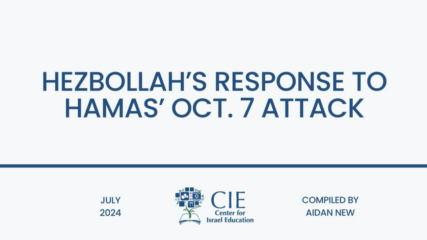
Hezbollah and Hamas have significant ideological and religious differences, but they are united in the goal of destroying Israel and in their alliance with Iran. Before Hamas’ attacks on October 7th, the two terrorist organizations had significant coordination, although Hamas did not warn Hezbollah what it planned for that day.

Hezbollah emerged in Lebanon in the 1980s, rooted in the historical marginalization of the country’s Shiite community. Today, Hezbollah is a major player in Lebanese social and political life, wielding significant influence over both the government and the military situation.
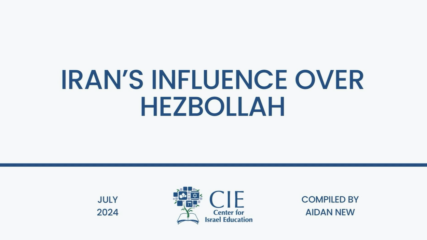
Iran exerts an immense amount of influence over its most successful proxy creation, Hezbollah.
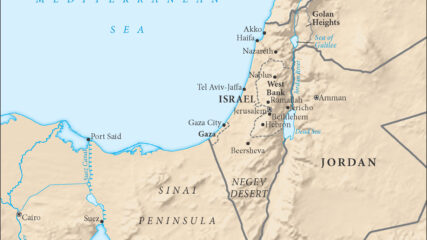
This 2018 map of the eastern Mediterranean, which remains current, shows all of Israel, Gaza, the West Bank, Lebanon and Cyprus, plus parts of Syria, Jordan, Egypt and Saudi Arabia, within the context of the…
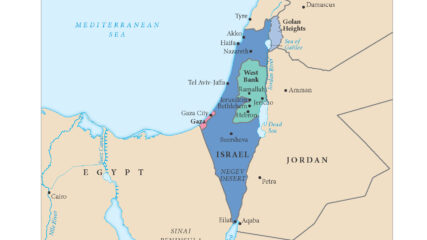
This regional map shows Israel and its neighbors after the Israeli withdrawal from the Sinai Peninsula, completed in 1982, and the disengagement from the Gaza Strip in August 2005.

Under the 1979 peace treaty, Israel withdrew completely from the Sinai, abandoning settlements and oil fields, by 1982. But Egypt did not reclaim the Gaza Strip, which it had controlled from 1948 to 1967.
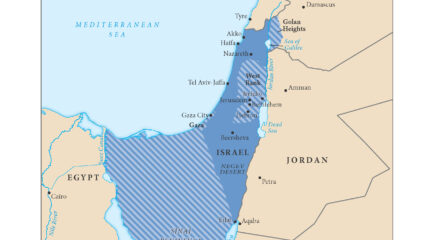
With its six-day victory in the June 1967 war, Israel added the Sinai Peninsula, the Gaza Strip, the Golan Heights and the West Bank (Judaea and Samaria) to the territory under its control. Israelis moved…
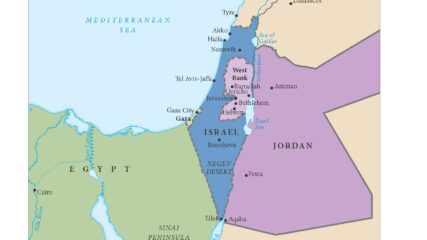
This map shows the territories controlled by Israel, Jordan (including the West Bank(, Lebanon, Syria and Egypt (including the Gaza Strip) at the end of Israel’s War of Independence in 1949. An Arab state was…
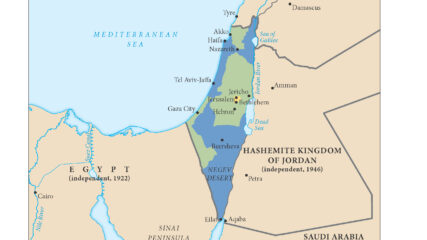
The United Nations General Assembly approved Resolution 181 on Nov. 29, 1947, to divide the British Mandate of Palestine into an Arab state and a Jewish state along the lines in this map, with an…

As shown in this map, the British in 1921 separated a new emirate, Transjordan, from what officially became the Mandate for Palestine the next year. The British officially maintained political and military control of both…

The British and French zones of influence, or mandates, in the eastern Mediterranean region were ratified by the San Remo Agreement in 1920 and approved by the League of Nations in 1922.
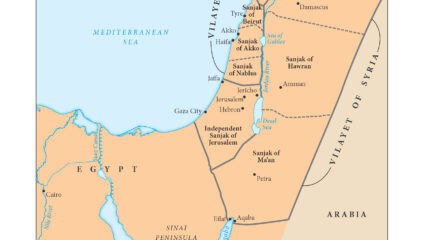
This map shows the Ottoman Empire’s administrative districts before World War I broke out in August 1914 in areas that today are Israel, Gaza, the West Bank, Lebanon, Jordan, Syria and part of Iraq.
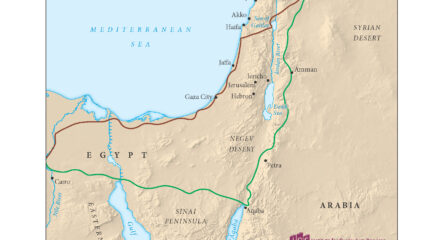
This map shows the Levant, including the Land of Israel, which serves as a bridge linking Africa, Asia and Europe. The map shows ancient trade routes but not political borders before or after World War…
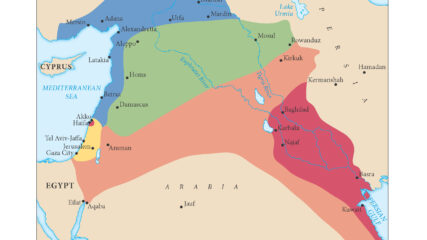
Great Britain and France secretly negotiated the Sykes-Picot Agreement in 1916. The two European powers agreed, according to their respective spheres of influence, to divide the Middle East territories previously administered by the Ottoman Empire.
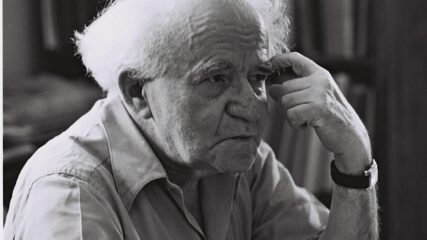
Israel’s first prime minister was a prolific writer. In this excerpt of a 50-page document, he notes that the Jewish nation’s DNA included relentless challenges marked by dispersal, ostracism and hatred by many people. Despite these adversities, Israel’s establishment symbolizes a remarkable victory against all odds — a culmination of the Jewish people’s tenacity and unyielding spirit. The state and Zionism were not remotely close to being finished, nor having succeeded in the quest for the Jewish people’s normalization.
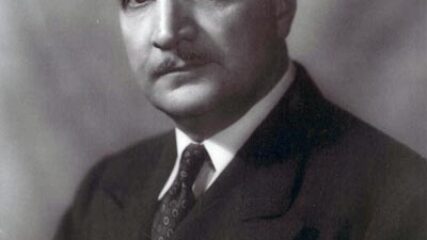
Loy Henderson, Director of the Office of Near Eastern and African Affairs, U.S. State Department, to U.S. Secretary of State George Marshall
Writing two months before the U.S. voted at the United Nations in favor of Palestine’s partition into Arab and Jewish states, Henderson voices profound dislike for Zionism and a Jewish state. He advocates for cultivating positive relations with Muslim and Arab states. He is one of many at the State Department at the time who saw Zionism as contrary to American national interests.

Since the June 1967 war, Anti-Israeli sentiment on US campuses has grown to extraordinary proportions merging with previously evolved anti-Zionism into sporadic mention to regular embrace.

Five Arab political parties sent a memorandum of protest to the British asking for a halt to Jewish immigration, a stoppage in Arab land sales to Jews,and a measure of self-determination. The British did not change their policies in these three areas. In 1939, they did severely limit Jewish land purchases and severely curtailed Jewish immigration.
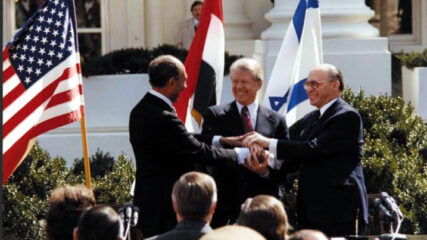
Signed sixteen months after Sadat’s visit to Jerusalem, it calls for establishment of diplomatic relations, staged Israeli withdrawal from Sinai, and American security arrangements to support the bilateral treaty.
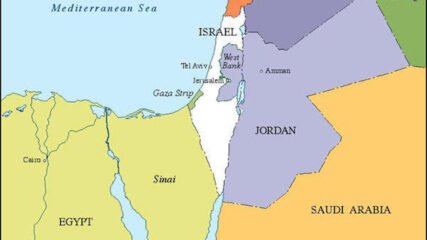
Hamas absolutely opposes Israel’s right to exist, with its leadership repeatedly declaring that all of Palestine belongs to Moslems.

In less than 45 minutes, Israeli educator Susan Nachman Fraiman presents a taste of the variety of voices in Israeli art that have emerged in the past 20 years: female, religious, Mizrahi, Ethiopian and Israeli-Palestinian, all of which are rich subjects in themselves. We examine a few examples of works from each of these sectors and try to understand the rich background from which they come. This video is from a session July 25, 2022, at the 21st annual CIE/ISMI Enrichment Workshop on Modern Israel.
Dive in, or choose a pathway: Topics, Types, Eras and/or Languages. Explore robust content. Come back often for more.